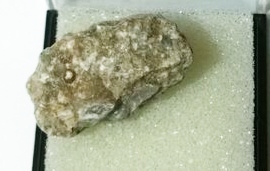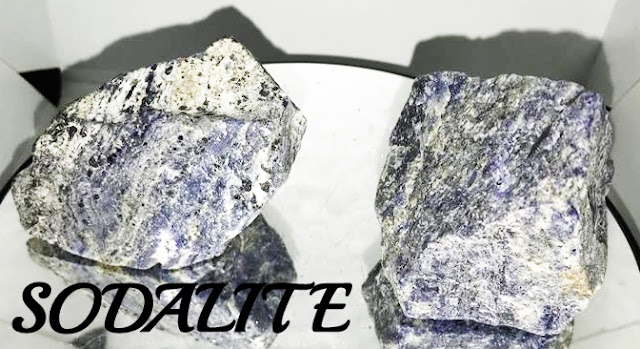Crinoidal LimeStone...
Most limestone's form in shallow, calm, warm marine waters. That type of environment is where organisms capable of forming calcium carbonate shells and skeletons can easily extract the needed ingredients from ocean water. When these animals die, their shell and skeletal debris accumulate as a sediment that might be lithified into limestone. Their waste products can also contribute to the sediment mass. Limestone's formed from this type of sediment are biological sedimentary rocks. Their biological origin is often revealed in the rock by the presence of fossils.
Some limestone's can form by direct precipitation of calcium carbonate from marine or fresh water. Limestone's formed this way are chemical sedimentary rocks. They are thought to be less abundant than biological limestone's.
Today Earth has many limestone-forming environments. Most of them are found in shallow water areas between 30 degrees north latitude and 30 degrees south latitude. Limestone is forming in the Caribbean Sea, Indian Ocean, Persian Gulf, Gulf of Mexico, around Pacific Ocean islands, and within the Indonesian archipelago.
One of these areas is the Bahamas Platform, located in the Atlantic Ocean about 100 miles southeast of southern Florida (see satellite image). There, abundant corals, shellfish, algae, and other organisms produce vast amounts of calcium carbonate skeletal debris that completely blankets the platform. This is producing an extensive limestone deposit.
Chalk: A soft limestone with a very fine texture that is usually white or light gray in color. It is formed mainly from the calcareous shell remains of microscopic marine organisms such as foraminifers, or the calcareous remains from numerous types of marine algae.
Coquina: A poorly-cemented limestone that is composed mainly of broken shell debris. It often forms on beaches where wave action segregates shell fragments of similar size.
Fossiliferous Limestone: A limestone that contains obvious and abundant fossils. These are normally shell and skeletal fossils of the organisms that produced the limestone.
Lithographic Limestone: A dense limestone with a very fine and very uniform grain size that occurs in thin beds which separate easily to form a very smooth surface. In the late 1700s, a printing process (lithography) was developed to reproduce images by drawing them on the stone with an oil-based ink and then using that stone to press multiple copies of the image.
Oolitic Limestone: A limestone composed mainly of calcium carbonate "oolites," small spheres formed by the concentric precipitation of calcium carbonate on a sand grain or shell fragment.
Travertine: A limestone that forms by evaporative precipitation, often in a cave, to produce formations such as stalactites, stalagmites, and flowstone.
Tufa: A limestone produced by precipitation of calcium-laden waters at a hot spring, lake shore, or other location.
Coquina: A poorly-cemented limestone that is composed mainly of broken shell debris. It often forms on beaches where wave action segregates shell fragments of similar size.
Fossiliferous Limestone: A limestone that contains obvious and abundant fossils. These are normally shell and skeletal fossils of the organisms that produced the limestone.
Lithographic Limestone: A dense limestone with a very fine and very uniform grain size that occurs in thin beds which separate easily to form a very smooth surface. In the late 1700s, a printing process (lithography) was developed to reproduce images by drawing them on the stone with an oil-based ink and then using that stone to press multiple copies of the image.
Oolitic Limestone: A limestone composed mainly of calcium carbonate "oolites," small spheres formed by the concentric precipitation of calcium carbonate on a sand grain or shell fragment.
Travertine: A limestone that forms by evaporative precipitation, often in a cave, to produce formations such as stalactites, stalagmites, and flowstone.
Tufa: A limestone produced by precipitation of calcium-laden waters at a hot spring, lake shore, or other location.
Please pop over to our website if your looking to buying any crystals by simply clicking on the link below!






Comments
Post a Comment